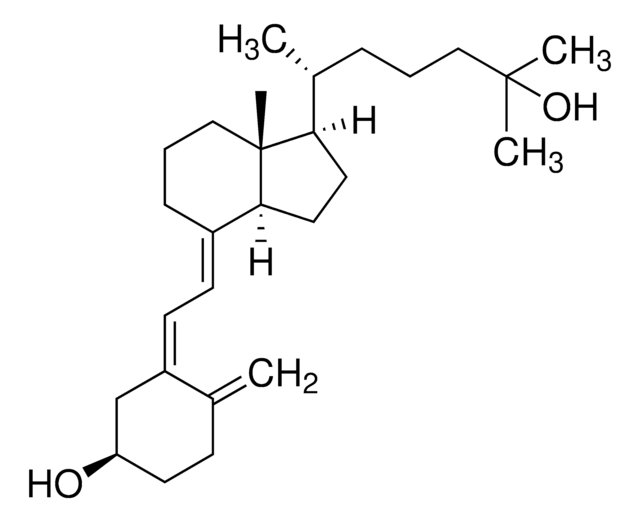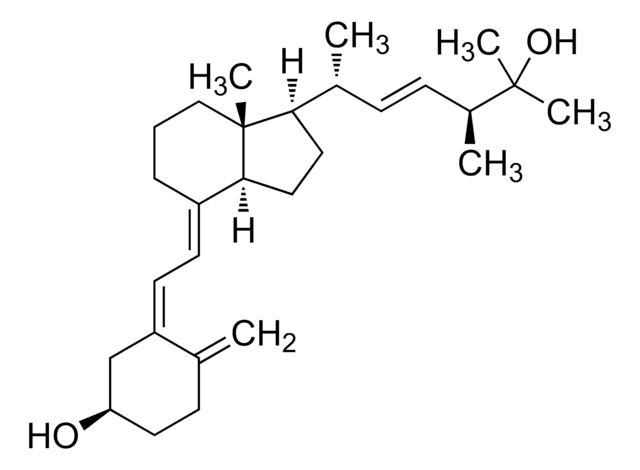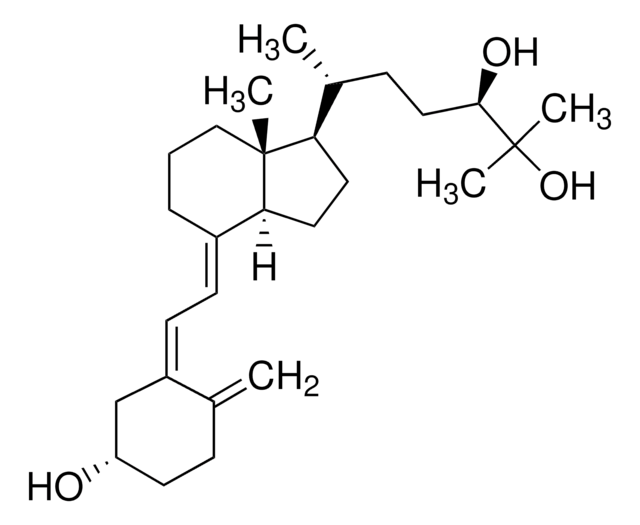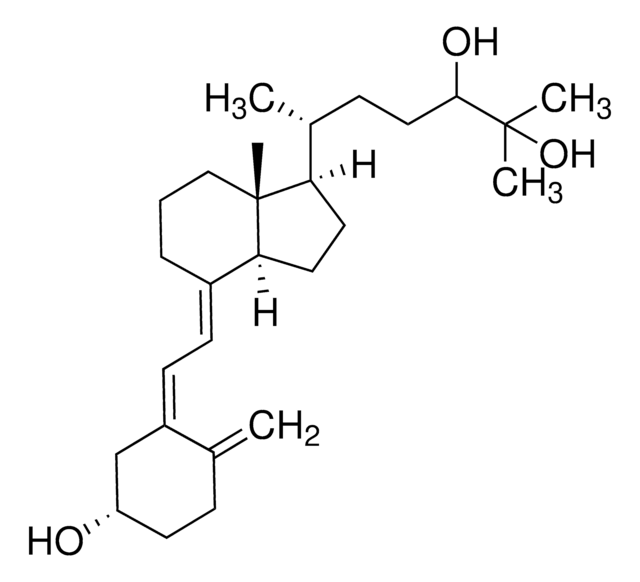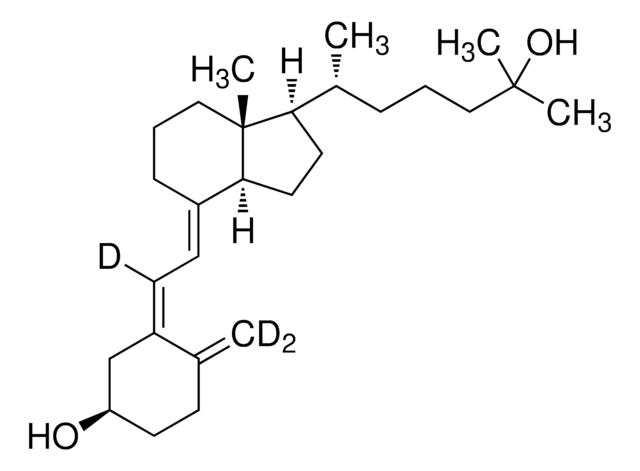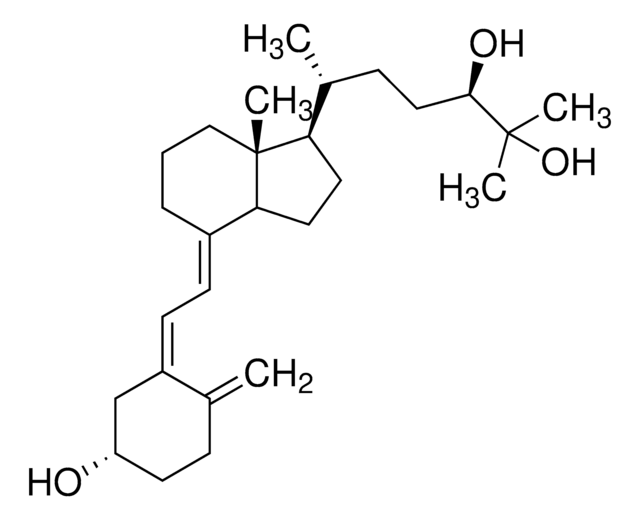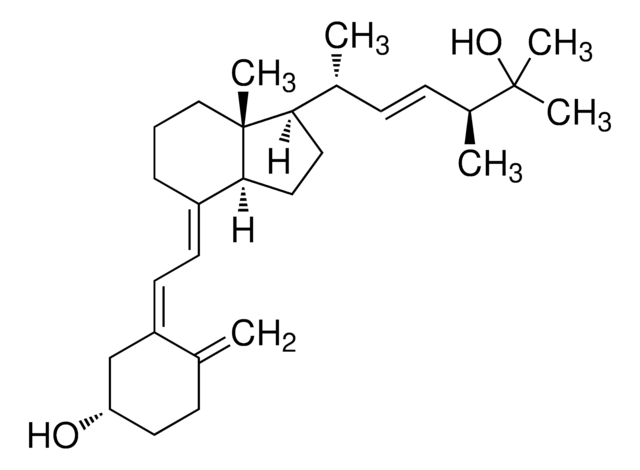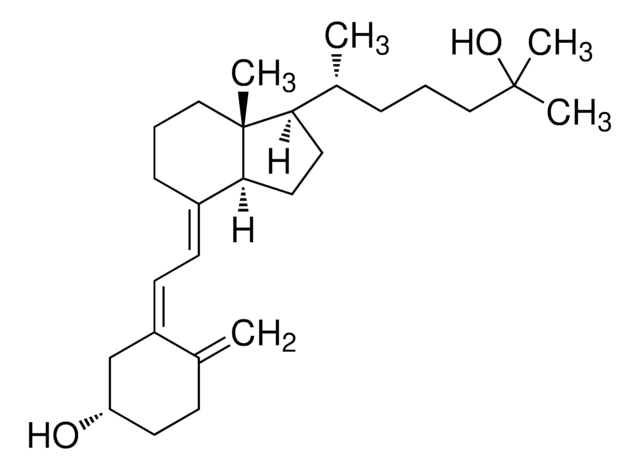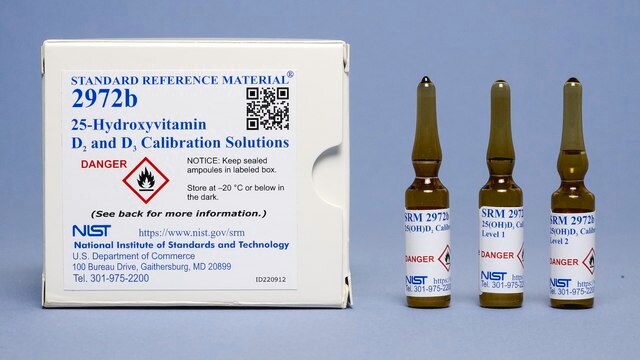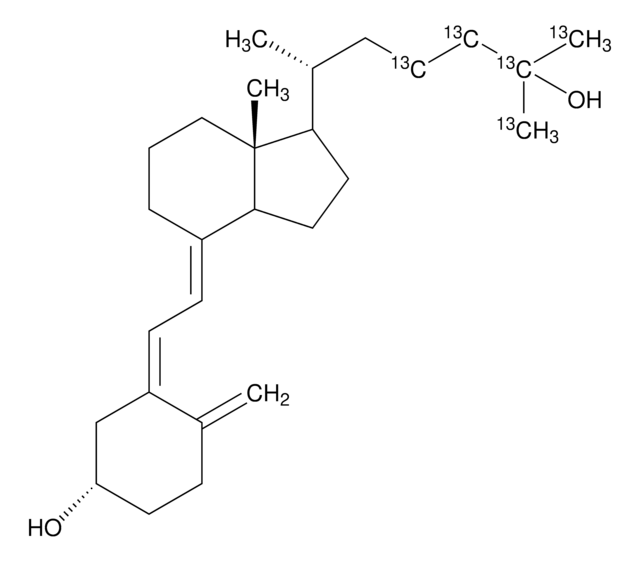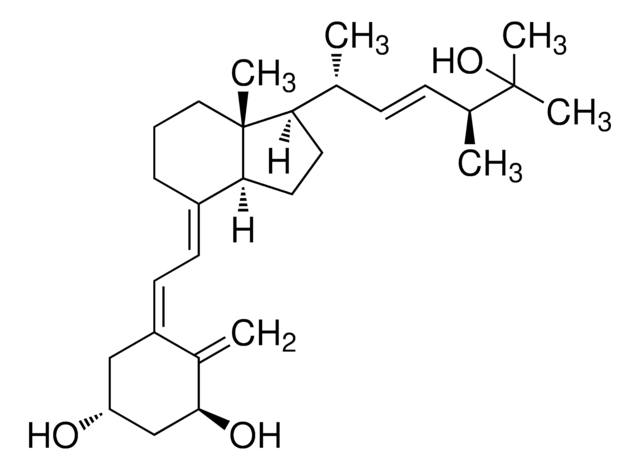About This Item
Recommended Products
Quality Level
Assay
98% (CP)
form
powder
technique(s)
mass spectrometry (MS): suitable
color
white to off-white
mass shift
M+3
storage temp.
−20°C
SMILES string
C[C@@]12[C@](CC[C@]2([H])[C@@H](CCCC(C)(O)C)C)([H])/C(CCC1)=C/C=C3C[C@H](O)CCC/3=C
InChI
1S/C27H44O2/c1-19-10-13-23(28)18-22(19)12-11-21-9-7-17-27(5)24(14-15-25(21)27)20(2)8-6-16-26(3,4)29/h11-12,20,23-25,28-29H,1,6-10,13-18H2,2-5H3/b21-11+,22-12-/t20-,23-,24-,25+,27-/m1/s1
InChI key
JWUBBDSIWDLEOM-UEGFJKGBSA-N
Application
Packaging
related product
Signal Word
Danger
Hazard Statements
Precautionary Statements
Hazard Classifications
Acute Tox. 2 Inhalation - Acute Tox. 3 Dermal - Acute Tox. 3 Oral - STOT RE 1 Oral
Storage Class Code
6.1A - Combustible acute toxic Cat. 1 and 2 / very toxic hazardous materials
WGK
WGK 3
Flash Point(F)
Not applicable
Flash Point(C)
Not applicable
Choose from one of the most recent versions:
Already Own This Product?
Find documentation for the products that you have recently purchased in the Document Library.
Customers Also Viewed
Articles
Novel sample prep technique coupled with the unique selectivity of the Ascentis Express F5 column enables a fast and simplified bioanalytical method for associated vitamin D metabolites.
Using HybridSPE-Phospholipid, Ascentis Express, and Other LC-MS Workflow Components
Improvement in LC/MS Analysis of Vitamin D Metabolites in Serum by Leveraging Column Selectivity and Effective Sample Prep
This application shows an Ascentis Express F5 provided rapid resolution of the isobaric vitamin D metabolites. MS detection provides the necessary secondary resolution.
Our team of scientists has experience in all areas of research including Life Science, Material Science, Chemical Synthesis, Chromatography, Analytical and many others.
Contact Technical Service